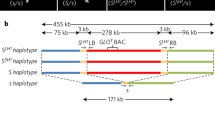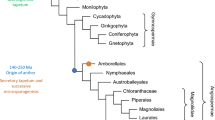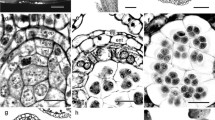Abstract.
Anthers of the common annual weed, Senecio vulgaris, show an incomplete development of the two adaxial pollen sacs (microsporangia, MS). One or both adaxial MS can be missing, or they are replaced by sterile lobes. The reduction is stronger in the derived subspecies, S. vulgaris var. vulgaris than in the ancestral subspecies, S. vulgaris ssp. denticulatus. This character in S. vulgaris differs from the usual complete reduction of adaxial MS in other, independent instances of disporangiate anthers in the Asteraceae. It corresponds to the “transition phenotypes” associated with various recombinant genotypes derived from artificial crosses between tetrasporangiate (4 MS) and disporangiate (2 MS) species in the Asteracean genus Microseris. Senecio vulgaris could be a rare natural instance of homozygosity for a major gene permitting reduction of the adaxial MS in which the expression of the reduced phenotype is determined by different numbers of modifiers in the two subspecies.
Similar content being viewed by others
Author information
Authors and Affiliations
Corresponding author
Rights and permissions
About this article
Cite this article
Gailing, O., Bachmann, K. The anthers of Senecio vulgaris (Asteraceae): saltatory evolution caught in the act. Plant Syst. Evol. 240, 1–10 (2003). https://doi.org/10.1007/s00606-003-0037-7
Received:
Published:
Issue Date:
DOI: https://doi.org/10.1007/s00606-003-0037-7




